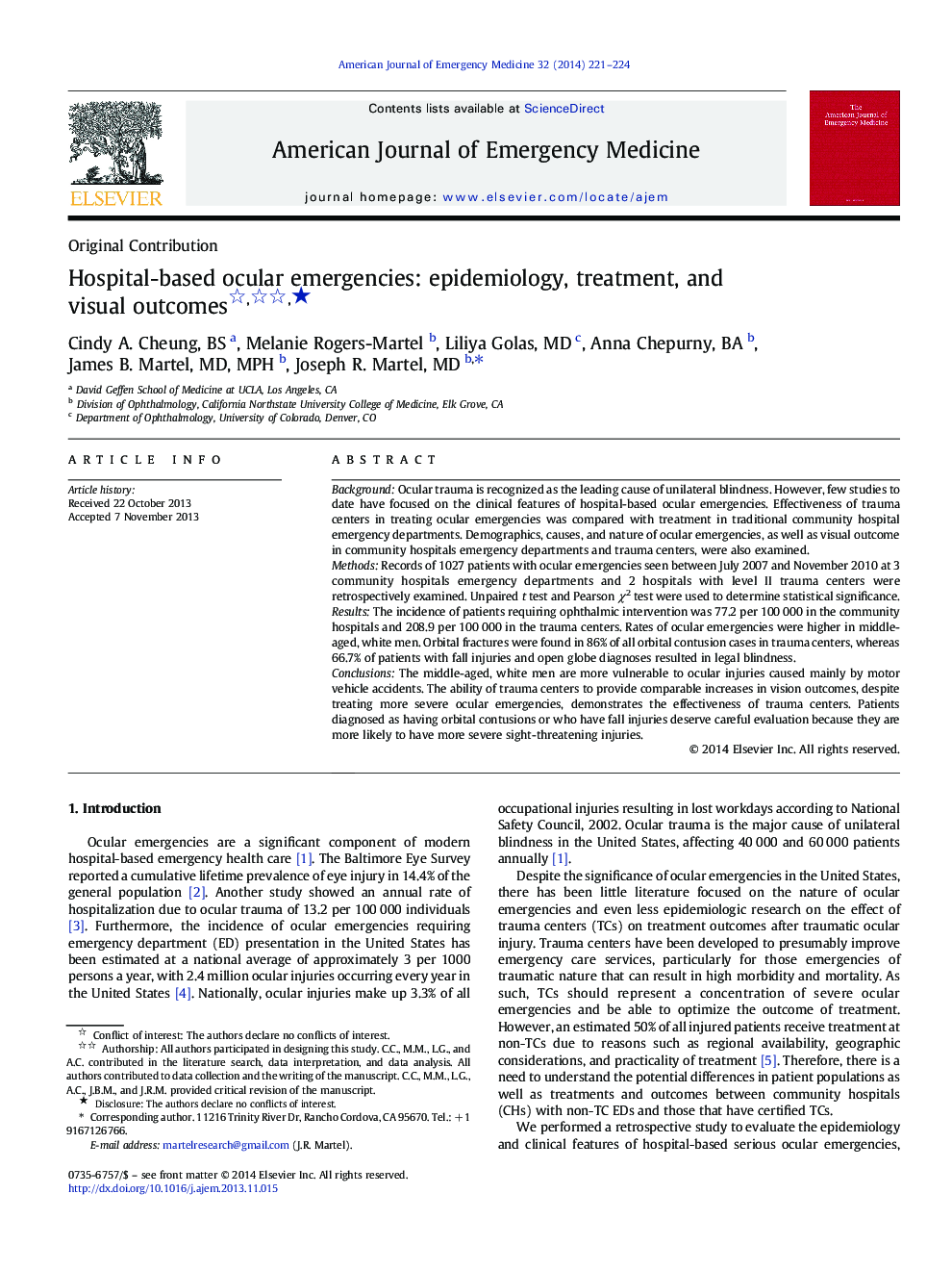| Article ID | Journal | Published Year | Pages | File Type |
|---|---|---|---|---|
| 3223969 | The American Journal of Emergency Medicine | 2014 | 4 Pages |
BackgroundOcular trauma is recognized as the leading cause of unilateral blindness. However, few studies to date have focused on the clinical features of hospital-based ocular emergencies. Effectiveness of trauma centers in treating ocular emergencies was compared with treatment in traditional community hospital emergency departments. Demographics, causes, and nature of ocular emergencies, as well as visual outcome in community hospitals emergency departments and trauma centers, were also examined.MethodsRecords of 1027 patients with ocular emergencies seen between July 2007 and November 2010 at 3 community hospitals emergency departments and 2 hospitals with level II trauma centers were retrospectively examined. Unpaired t test and Pearson χ2 test were used to determine statistical significance.ResultsThe incidence of patients requiring ophthalmic intervention was 77.2 per 100 000 in the community hospitals and 208.9 per 100 000 in the trauma centers. Rates of ocular emergencies were higher in middle-aged, white men. Orbital fractures were found in 86% of all orbital contusion cases in trauma centers, whereas 66.7% of patients with fall injuries and open globe diagnoses resulted in legal blindness.ConclusionsThe middle-aged, white men are more vulnerable to ocular injuries caused mainly by motor vehicle accidents. The ability of trauma centers to provide comparable increases in vision outcomes, despite treating more severe ocular emergencies, demonstrates the effectiveness of trauma centers. Patients diagnosed as having orbital contusions or who have fall injuries deserve careful evaluation because they are more likely to have more severe sight-threatening injuries.
